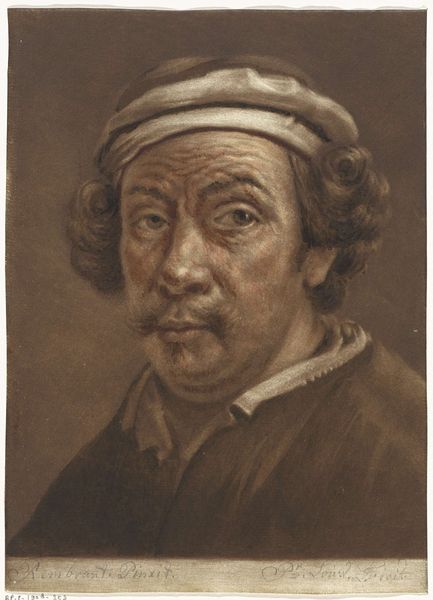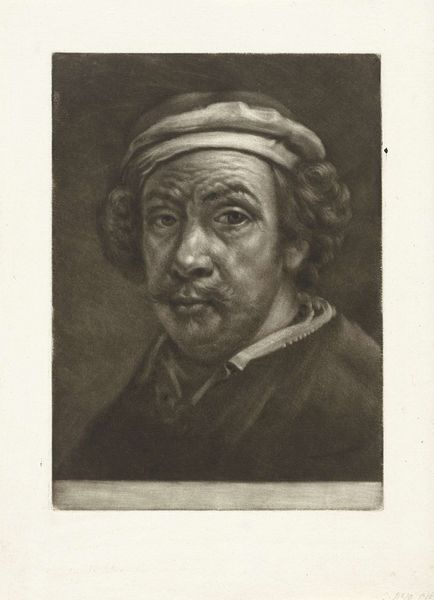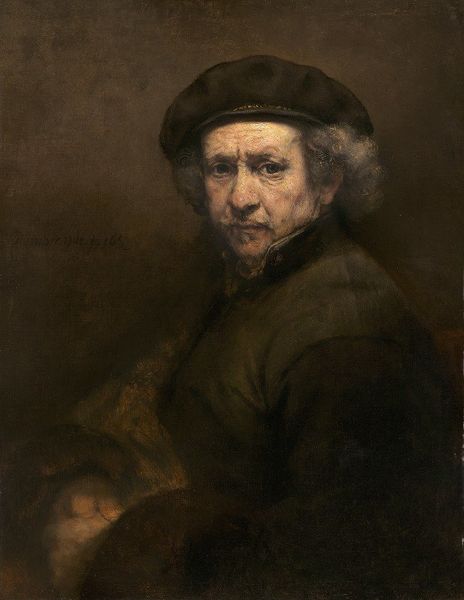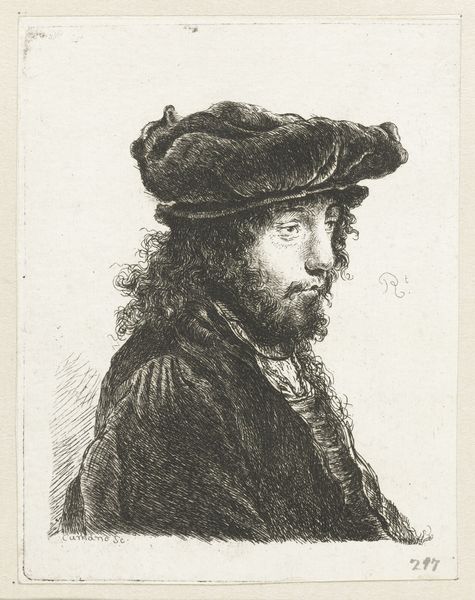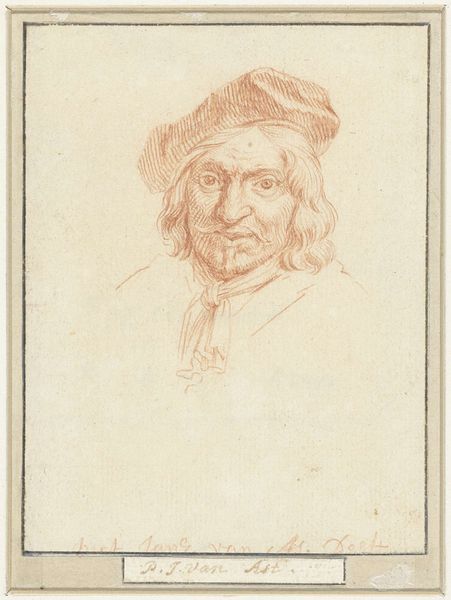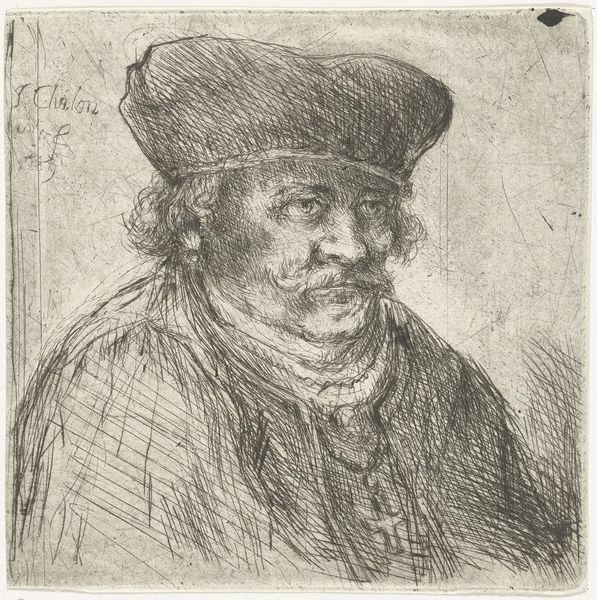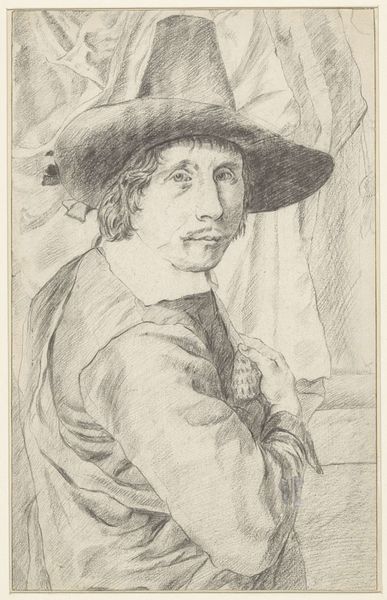
Dimensions: height 280 mm, width 205 mm
Copyright: Rijks Museum: Open Domain
Editor: Here we have a drawing titled "Portret van Rembrandt van Rijn," made sometime between 1743 and 1800. It looks like charcoal on paper. I’m immediately drawn to the gaze – intense, unflinching. What do you see in this piece? Curator: It’s fascinating to consider this through a contemporary lens of identity and self-representation, especially regarding the male gaze and its power dynamics. We assume it is a self-portrait and question what a male artist’s intention may be, what narrative is he imposing on himself? The very act of a prominent white male artist capturing his own image reflects a certain privilege, doesn’t it? How does this echo through art history, with marginalized artists often excluded from such representation? Editor: That’s a compelling point. The self-portrait as an act of claiming space. How would you relate it to, say, contemporary portraiture? Curator: Contemporary artists of color are consciously reclaiming that space, challenging the historical dominance of white male artists and offering diverse perspectives on identity and representation. What historical and societal issues could intersect with Rembrandt's choice to paint himself, considering, say, Dutch colonialism? Editor: So, the idea of Rembrandt painting himself is not just a neutral act, but something inherently tied to power and the social fabric of his time. It becomes an active assertion. Curator: Exactly. By examining his art through an intersectional lens, we see that his “genius” was developed in a societal ecosystem structured by colonial and class power dynamics, something rarely explicitly acknowledged when praising artists of that era. Editor: I hadn't considered how those historical power structures affect our interpretations today. Thank you for broadening my perspective. Curator: And thank you. It’s through such dialogue that we can disrupt established narratives and create space for more inclusive and critical perspectives in art history.
Comments
No comments
Be the first to comment and join the conversation on the ultimate creative platform.
